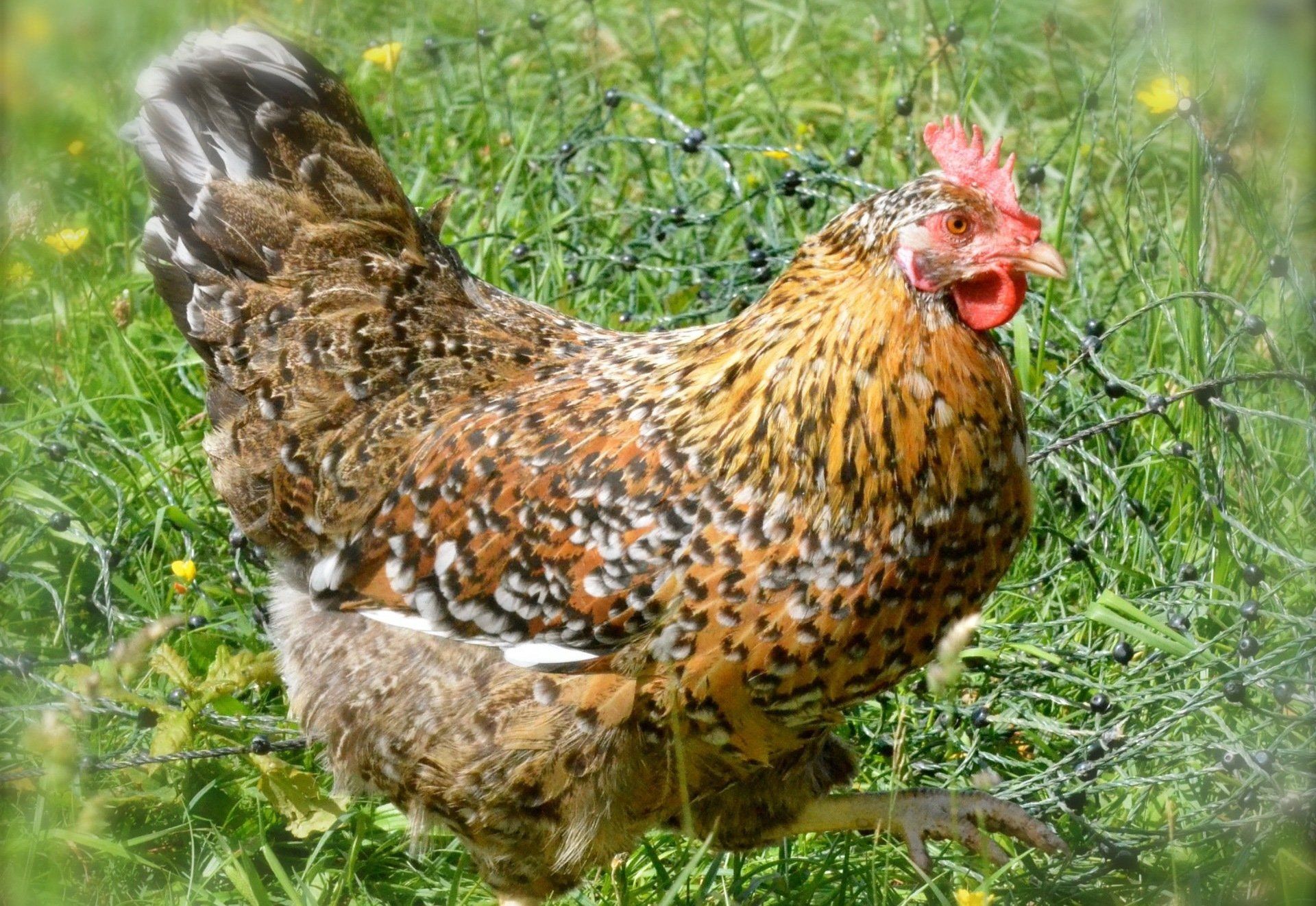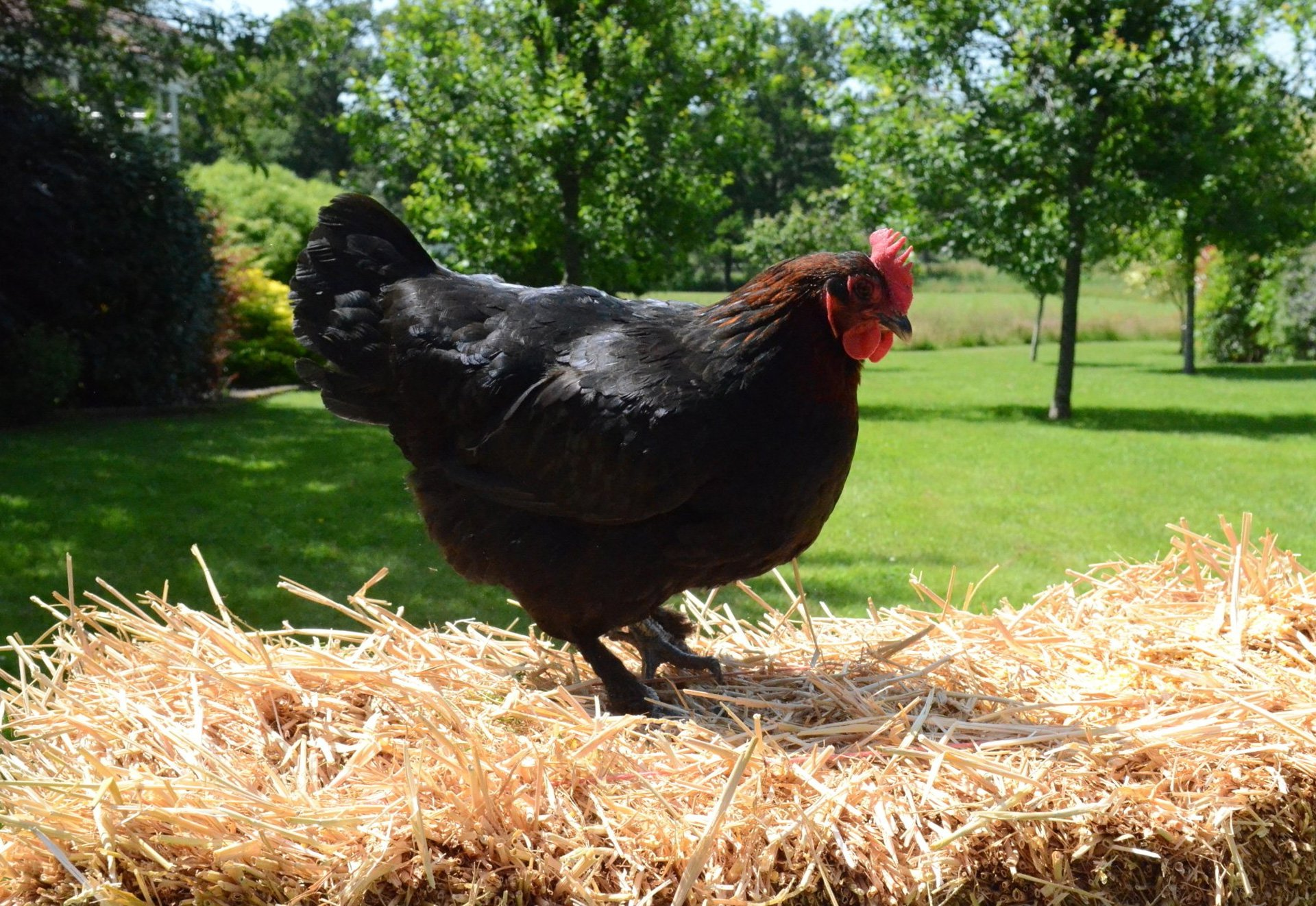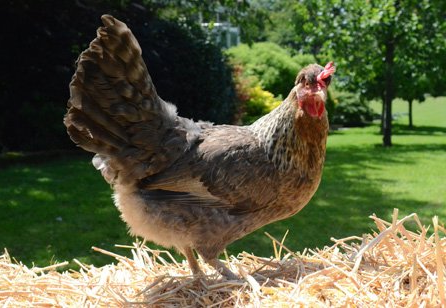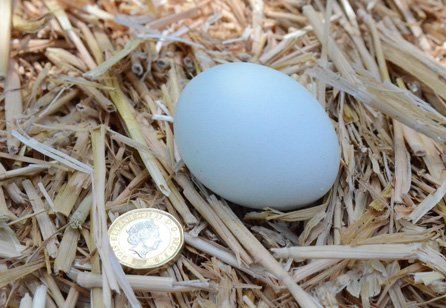Hens for sale
Swedish Flower Chicken
We offer a range of unique and beautiful breeds available to buy, including French Copper Black Marans that lay dark brown eggs and Crested Cream Legbars - the blue egg layer. You can find more information about our birds below. If you would like any help or advice, just contact our farm and we'll be happy to answer any questions. Based in West Sussex, we provide pullets for customers across the UK.
The Swedish Flower Chicken,
(Skånsk blommehöna), got its name due to the speckles or “flowers” on the tips of their feathers. It is an ancient landrace, which was first mentioned in folklore literature more than 300 years ago. It is likely, that the Romans brought chickens to Sweden and these birds then developed into the landrace breed we know today.
A landrace is a domesticated chicken, which has developed largely by local, natural processes in order to adapt to the specific local environment. It is in this way that a landrace differs from a formal breed, which is bred to conform to a particular standard or purpose. A landrace breed share the same utilitarian traits but not necessarily the exact same standard. There are no "show" lines, or "snow leopard" colour when it comes to flower chickens. This is a modern and incorrect terminology which was not used in Sweden 300 years ago.
Flower chickens are the largest landrace chicken in Sweden and are thought to have developed their individually speckled plumage as a means of survival as the “flowers” act as the perfect camouflage against predators. As a landrace, Flower Chickens have no “show” or “utility” lines. It should be remembered, that 300 years ago, chickens were simply farm animals! Their usage was eggs, meat and feathers (it gets very cold in Sweden!).
Swedish Flower Chickens came dangerously close to extinction in the 1970s, however a few enthusiasts found just enough chickens at only three farms in the villages of Esarp, Vomb and Tofta. From these few birds and an almost impossibly small gene pool, they painstakingly worked to thankfully, ensure the continuation of the breed. Their success meant that Swedish Flower Chickens achieved gene pool status in Sweden in 2001. The FAO has listed the breed as “Endangered-Maintained”.
£45 per pullet
Copper Black Marans
The original landrace birds originated in the swampy farm country near Marans and La Rochelle and was know as swampy birds.
In the 12th century, when Eleanor of Aquitaine married Henri 2nd, her dowry included part of South -West France and during the following two centuries, sailors from England would unload surviving game cockerels that had entertained the sailors at sea. These game cockerels naturally crossed with the local landrace, producing a stockier bird that laid darker eggs. French amateur breeders became fascinated by Indonesian and Asian game cockerels. The Asian fleshy breeds did not have yellow legs and laid dark eggs and, in time, these birds were also crossed and the main characteristics of the Marans breed was set – the big red eggs which made the birds popular in France. The addition of Croad Langshan, Brahmas, Coucou de Malines, Coucou de Rennes and Gatinaise chickens created a bird which was to become the ancestors of the Marans breed we know today.
In 1921 Madame Rouse unified the plumage and produced the first Cuckoo Marans and ten years later the first breed standard was published, stating three varieties, Silver Cuckoo, White and Copper Black. They were called Marans after the French port of the same name. The Cuckoo got its plumage from the Coucou de Maline and the Coucou de Rennes and the Copper Black Marans can trace its feathered feet to the Brahmas and Croad Langshan.
After WW2, the breed had become close to extinction. The French Department of Agriculture rescued it from obscurity and began a breeding program to bring the breed back to popularity as a dual purpose breed. One of the goals of the program was to increase egg production which it did. By 1952 Marans were producing around 200 eggs per year and had six varieties. The bird was popular as a dual purpose bird until the advent of the modern, commercial chicken.
£37 per pullet
Crested Cream Legbar
Clarence Elliott was a British horticulturist. In 1927 he travelled to South American on an expedition to collect exotic plants and animals. On his return to England in 1928, a small group of light yellowy-brown, crested Chilean hens ( Araucanas ) that laid blue eggs was given to Prof. R.C. Punnett who was the director of the Cambridge University Breeding Program. Michael Pease worked alongside Punnett as a member of the program. The program’s aim was to create an auto sexing utility breed where male and female day old chicks could easily be sexed.
Punnett discovered the auto-sexing ability of chickens while studying different types of barring patterns in chickens. He learned that any pure breed with the sex-linked cuckoo barring on top of a brown variety bird would be auto-sexing.
In 1930, Clarence Elliott returned after a second expedition to Chile. He brought back 3 more Auracanas, which he gave to Punnett. One hen died but Punnett was able to cross breed with a Gold Penciled Hamburg Cockerel. The result was gold hen with irregular penciling.
Although, the auto-sexing feature was advantageous for the poultry industry, the birds were not very productive and in 1935, Punnett imported a Barred Plymouth Rock Hen from Canada and mated it with three Danish Brown Leghorns as the Danish line was more productive and hardier. They have cream plumage.
Meanwhile, Michael Pease had also created a Legbar with a cream plumage.
When Punnett, learned of Pease’s cream discovery they decided to see if the cream colour in the Legbars was the same gene in Punnett’s Creams. Tests proved they were both of the same gene.
The offspring resulting from the fusion of the two cream lines were selected for crests to distinguish them from Gold and Silver Legbars, blue egg laying ability, and clear markings of the auto-sexing feature. Punnett introduced these birds at the London Diary Show in 1957.
These were standardised in 1958 but nearly died out in the 1970s as there was no demand and it couldn’t compete with the modern commercial hybrid egg layer.
The breed was rescued by the Werniess Collection and David Applegarth.
£35 per pullet
At Swedishflowerchickens.com, we provide beautiful birds for clients across the UK. If you would like more information about our breeds and the chickens we have for sale, contact our farm in West Sussex. We are more than happy to give you help and advice on how to care for your pullets and can put you in touch with SFC stockists who can provide everything you need for happy hens.







